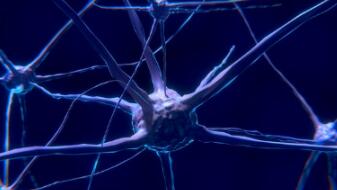
Source of pictures: pixabay
Maybe you’ve heard someone has "a reflex arc that can go around the earth three times." This is a description of a person who is slow to react. So what is the "reflex arc"?
The "reflex arc" is a neural pathway that controls a reflex. If you accidentally touch a flame, you would subconsciously snatch your hand away from the flame. This is a complete reflex action. The special neural structure for a complete reflex action consists of five basic components, i.e. receptor, afferent nerve, nerve center, efferent nerve and effector. Before you snatch your hand away from the flame, the receptor on your fingers senses a higher temperature and sends this information through the afferent nerve to the nerve center. The nerve center receives this information and judges that this temperature is harmful, therefore gives an instruction to stay away from it. This instruction is then transmitted via the efferent nerve to the effector, namely the muscles to inform you retract your arm. The muscles contract and relax, making your fingers move away from the flame. Then the reflex action is complete.
Reflex arc is the physiological basis of reflex action, which cannot be completed if any part is interrupted. However, the action of snatching your hand can be completed by giving instructions from the spinal cord, instead of the brain, which is a relatively low-level reflex action and a type of unconditioned reflex. We are born with it and don’t have to learn.
In contrast, there is another reflex action we have to learn. It’s conditioned reflex. A stimulus that cannot elicit a response, after learning, is given along with another stimulus that can elicit a response, thus establishing a link between the conditioned stimulus and the conditioned response. This kind of reflex action needs to be processed by the cerebral cortex.
Ivan Pavlov, scientist who came up with the theory of conditioned reflex, found in his experiments that once a connection between the food and a click or a bell ringing was made, dogs would salivate to the click or the bell by itself. He also found that if the sound of a whistle was paired multiple times with the food, the dogs would eventually salivate in response to the sound alone, even hearing different sounds of different whistles. But when the experimenters gave food along with the sound of a specific whistle, the dogs would soon salivate in response to this sound only.
There are many other examples of conditioned reflexes, such as "to quench thirst by looking at plums". When one is hungry and thirsty, he would involuntarily slobber if he sees sweet and sour plums. This is actually a second signal system conditioned reflex: just hearing or seeing rather than eating plums, he would think of the taste of plums and slobber.
But if he did see plums, his reflex of salivation would be the first signal system conditioned reflex. It would be the unconditioned reflex if he slobbered when eating plums. It is because the human cerebral cortex can generate advanced neural activities. Especially with the development of human civilization, humans created languages and words that other living things could never create. So languages and words can also arouse conditioned reflex. Anyway, acquired learning is also very important. If no one had ever eaten plums, no such story would have been handed down.
Author: Cao Yuanqing

















 京公网安备11010502039775号
京公网安备11010502039775号





